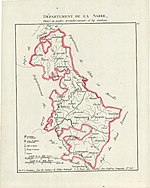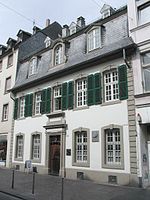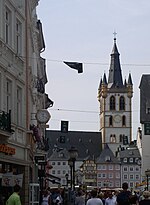Barbara Baths
Ancient Roman bathsAncient Roman buildings and structures in GermanyAncient Rome stubsBuildings and structures in TrierHistory of Trier ... and 1 more
World Heritage Sites in Germany

The Barbara Baths (German: Barbarathermen) are a large Roman bath complex in Augusta Treverorum, modern-day Trier, Germany. Stretching over 42,000 square meters, it is the largest Roman bath north of the Alps. Along with other sites in Trier, the bath complex was designated a UNESCO World Heritage Site in 1986 as part of the Roman Monuments, Cathedral of St. Peter and Church of Our Lady in Trier site, because of its historical importance and sprawling architecture.
Excerpt from the Wikipedia article Barbara Baths (License: CC BY-SA 3.0, Authors, Images).Barbara Baths
Friedrich-Wilhelm-Straße, Trier Barbara (Süd)
Geographical coordinates (GPS) Address External links Nearby Places Show on map
Geographical coordinates (GPS)
| Latitude | Longitude |
|---|---|
| N 49.75 ° | E 6.630278 ° |
Address
Barbarathermen
Friedrich-Wilhelm-Straße
54290 Trier, Barbara (Süd)
Rhineland-Palatinate, Germany
Open on Google Maps











